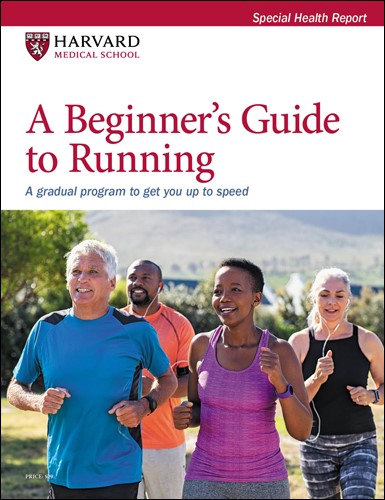Think running is not for you? Try this

The first time I tried running, I hated it. It was only two miles, but I was positive I would never, ever run again.
Sure, I understood the many benefits of running like improved heart health, weight management, and better moods. Yet, like many people who initially swear off running, I believed you had to run for many miles and many hours on a regular basis to make it worthwhile.
How much running adds up to benefits?
It turns out my thinking about running and health was all wrong. Research suggests that you don’t have to run far, fast, or even that often to reap the rewards from running.
For instance, a meta-analysis published online Nov. 4, 2019, by the British Journal of Sports Medicine looked at 14 studies involving more than 232,000 people, and found that running only once a week for less than 50 minutes has significant health benefits, such as a lower risk of cardiovascular disease, cancer, and death from all causes.
Even if you are a complete novice, or the idea of running sounds off-putting, you should still give it a try. “Many people think running is not for them, or they can’t do it well, but running is a simple skill and an easy activity to get into,” says Michael Clem, a doctor of physical therapy at the Harvard-affiliated Spaulding Outpatient Center. “After all, we’ve been running since we could walk.”
Run then walk
An easy way to ease into running is a run/walk program. With run/walk, you run for a brief period at a comfortable pace and then take a walking break until your body recovers. You repeat this back-and-forth cycle for a certain amount of time or distance. The goal is to slowly increase your running time and decrease your walking time until you run for a total of 20 to 25 minutes. You can do this either outside or on a treadmill.
Here is how a beginning program works:
- Run for one to two minutes and then walk for four to five minutes until you have fully recovered.
- Repeat the pattern five times.
- Do this routine twice a week on nonconsecutive days.
After one or two weeks, increase your running time to three or four minutes and walk two to three minutes or until you have recovered. Repeat the pattern five times.
When this becomes easy, run for five minutes and walk for a minute or until you have recovered. Complete the pattern four to five times.
Once you reach 20 to 25 minutes of running with few, if any, walking breaks, then you can adjust your running and walking times to fit your exercise goals like running longer or faster, or just staying where you are and focusing on consistency.
It’s running’s range of possibilities that turned me into a believer. Once I realized that running is an individual endeavor that doesn’t conform to specific guidelines or expectations, I began to enjoy it. I now run for as long and as fast and as often as I want, knowing that any time spent running is time well spent.
About the Author

Matthew Solan, Executive Editor, Harvard Men's Health Watch
Disclaimer:
As a service to our readers, Harvard Health Publishing provides access to our library of archived content. Please note the date of last review or update on all articles.
No content on this site, regardless of date, should ever be used as a substitute for direct medical advice from your doctor or other qualified clinician.
















